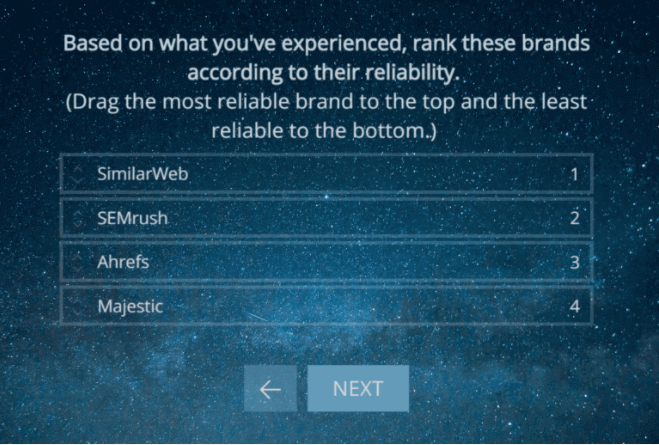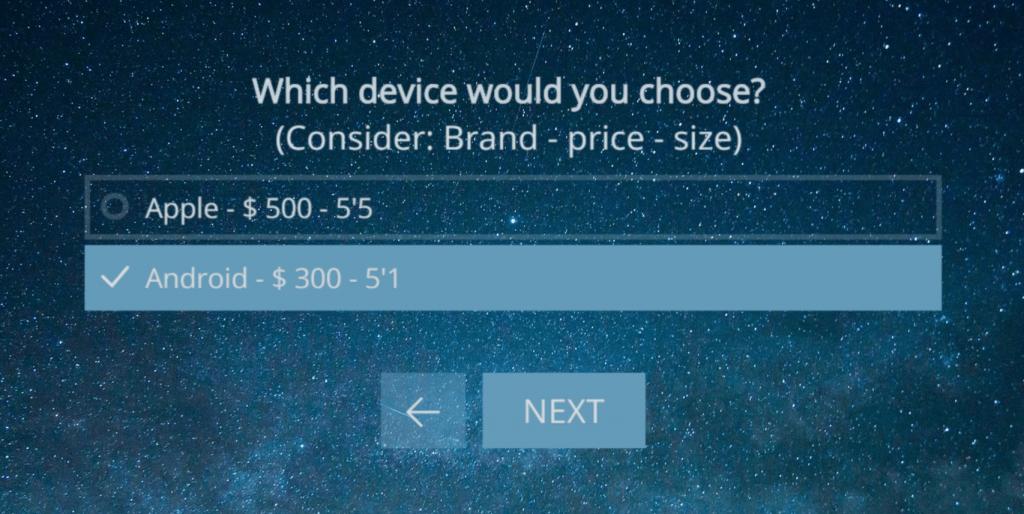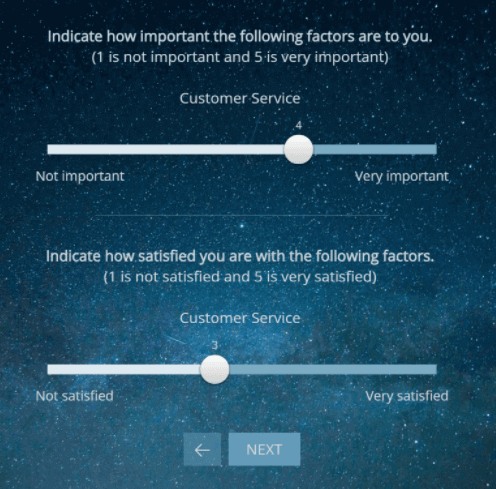One of the most popular research tools to find answers to business questions, surveys, are yet controversial:
- Some specialists insist survey results can’t be valid because of a cognitive bias human brains experience while answering survey questions.
- Short attention spans lead to people’s unwillingness to spend hours on questions a brand has in store for them. This moment may influence answers and, therefore, results in the accuracy of the surveys you design to get necessary data from respondents.
To control the situation, you need to consider creating short but still accurate surveys that would engage customers and allow to get the data from them. With so many survey question types available, marketers still need to think about designing those influencing the survey accuracy.
So why not consider five alternatives to commonly used forms of survey questions?
But first things first:
What makes an effective survey question
No matter what survey you create – email, SMS, web, or mobile – question types and design will affect the answers you get.
Consider the context of your company and customers when designing a survey: depending on your research goals, question and respondent answer types and order might differ too.
Asking wrong questions is inappropriate in digital marketing where every step may influence a conversion optimization and lead a specialist down the wrong path. That is why you should think twice about every question for customers survey. Avoid duplications, and choose question-answer types carefully to get accurate insights from respondents.
An effective survey question is:
- asked at the right time;
- directed to the right people;
- asked with the right voice and tone;
- reflecting your business goal and challenges.
The results of such surveys can explain a lot, compare you to competitors, and give ideas on customer experience improvement and your product/service optimization.
Increase survey accuracy with these 5 types of questions
1. Choice model
This one is a quantitative method of market research to learn client preferences on your product features or their reaction to price changes. You are welcome to rank up to 30 elements to find out how well people will accept your new product and what your potential marketing message may be.
Choice Model questions include scaling and analysis, and they are effective to examine benefits of your product or service, areas of investment, features to introduce, and more.
Example:
2. Rank order scaling
This type of questions will give accurate results when it comes to examining preferences on specific characteristics of your product.
Ask respondents to rank a product based upon its particular attribute. To get more accurate results, don’t allow to assign the same scores to several attributions. This question type also works for comparing different brands in order to learn the users’ preferences.
Example:

3. Semantic differential scaling
This question type serves to estimate products or brands within multi-point rating option. What makes the results more accurate here is people’s emotional attitude towards a subject of the survey.
Thus, you ask them to rate a product based on opposite adjectives: likely/unlikely, love/hate, happy/sad, etc. To get the most accurate results, provide a definite number of options (up to seven) so responders could use the whole scale of emotions.
You can use emoticons, slider rating scale, or non-sliders to generate semantic differential scales. Such questions are time-saving for respondents, and they help you indicate a particular level of their agreement or disagreement with a mentioned topic.
Example:
Most people are familiar with rating scales, so it won’t take too long for them to complete your survey.
As for the rating scales to consider, three most common are 1-10, 1-7, and 1-5 (Likert scale). With 5 being the most positive and 1 – the most negative, the Likert scale seems the most optimal to use.
4. Matrix table
A table format of this question type allows you to list attributes for ranking on the left with several answers options at the top to make it easier for respondents to choose right answers. It reminds a semantic differential scaling a bit with two opposite rankings on a scale.
Give up to five answer choices for customers to select per each parameter while rating different attributes of a product, quality of your service, professionalism, understanding their needs, etc. A table format visualizes all answer variants at once to save users time.
Note that this format doesn’t work in every environment. To avoid frustration from respondents taking your survey on a mobile device, this question type can be rebuilt with responsive slider questions grouped on screen.
Example:

5. Side-by-side matrix
This one is very similar to the Matrix Table but allows you to organize a detailed survey of learning importance and satisfaction levels of the services you offer to users. Define multiple options simultaneously, creating a table with two opposite scales (five answer options for each).
The side-by-side matrix allows getting accurate results with no additional resources. You will see what changes are necessary for your product to satisfy customers’ needs and what are your advantages to maintain even better business results.
Again, for mobile users, it is advised to tone down questions and limit topics per screen.
Example:
Long story short:
Survey accuracy can be manipulated with a lot of survey question types, and you are welcome to consider different ones to get feedback from customers on the issues that interest you. Just remember: the accuracy of your survey will depend on the quality of questions you choose and distribute.
In his book, The Complete Guide to Writing Questionnaires, David Harris wrote, “If we make questions clear, answerable, easy and unbiased, we can reduce the survey length, improve the respondent experience, completion rates and the quality of data.”
So given that no universal guidelines for perfect survey questions exist, simply design yours in the context of your marketing goals and customers. Depending on a type of data you need, questions may differ as well.
The more question types you know, the more chances you’ll have to get necessary insights from your respondents. Commonly used questions such as closed- and open-ended ones are great, but they have some disadvantages:
You risk frustrating respondents if they don’t find a preferable answer variant in your survey.
The data you get will need additional analysis for more accurate results.
Alternative types of questions are what can help you influence the accuracy of surveys. Once you determine the business goal of your survey and see that matrix table or semantic differential scaling are the best variants to design a questionnaire – do your best to create and distribute a survey accordingly.
And don’t forget about technologies such as Pointerpro to captivate responders’ attention and create the experience they expect from you.





